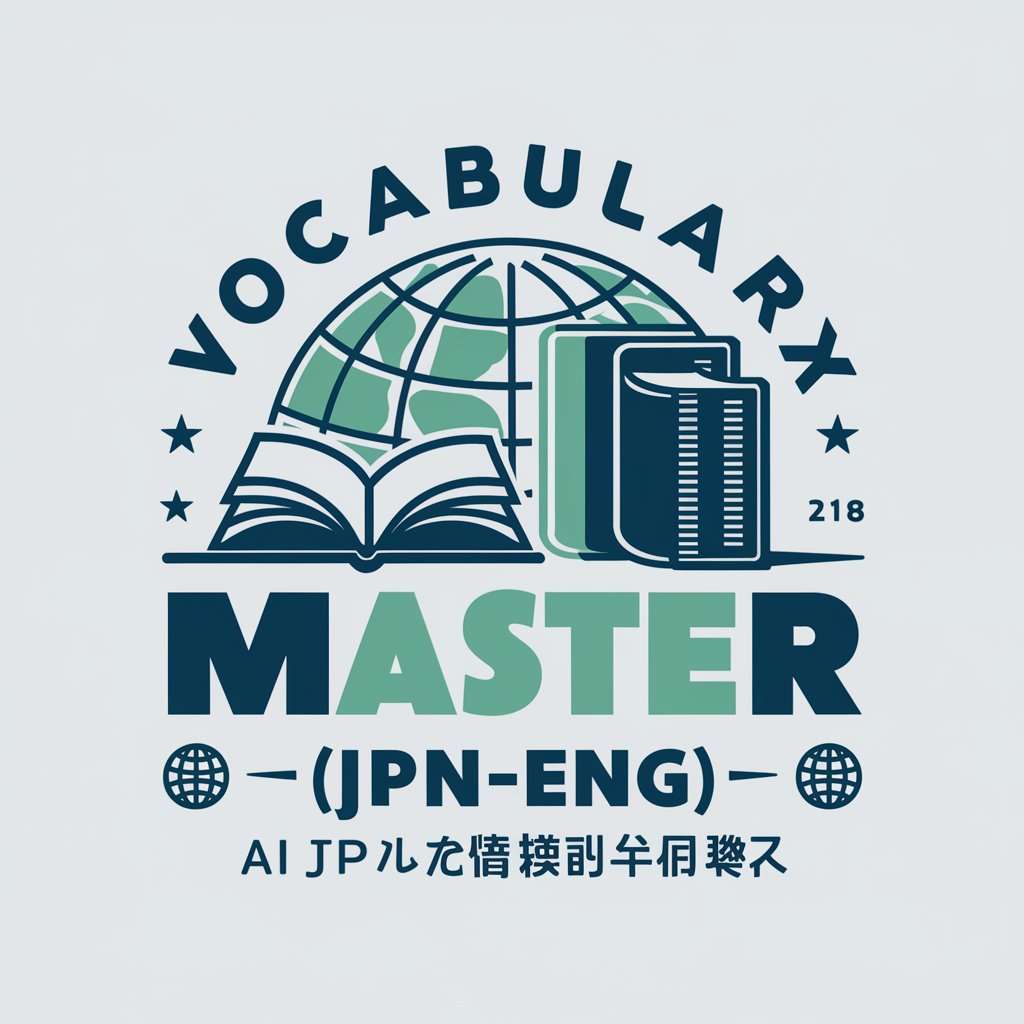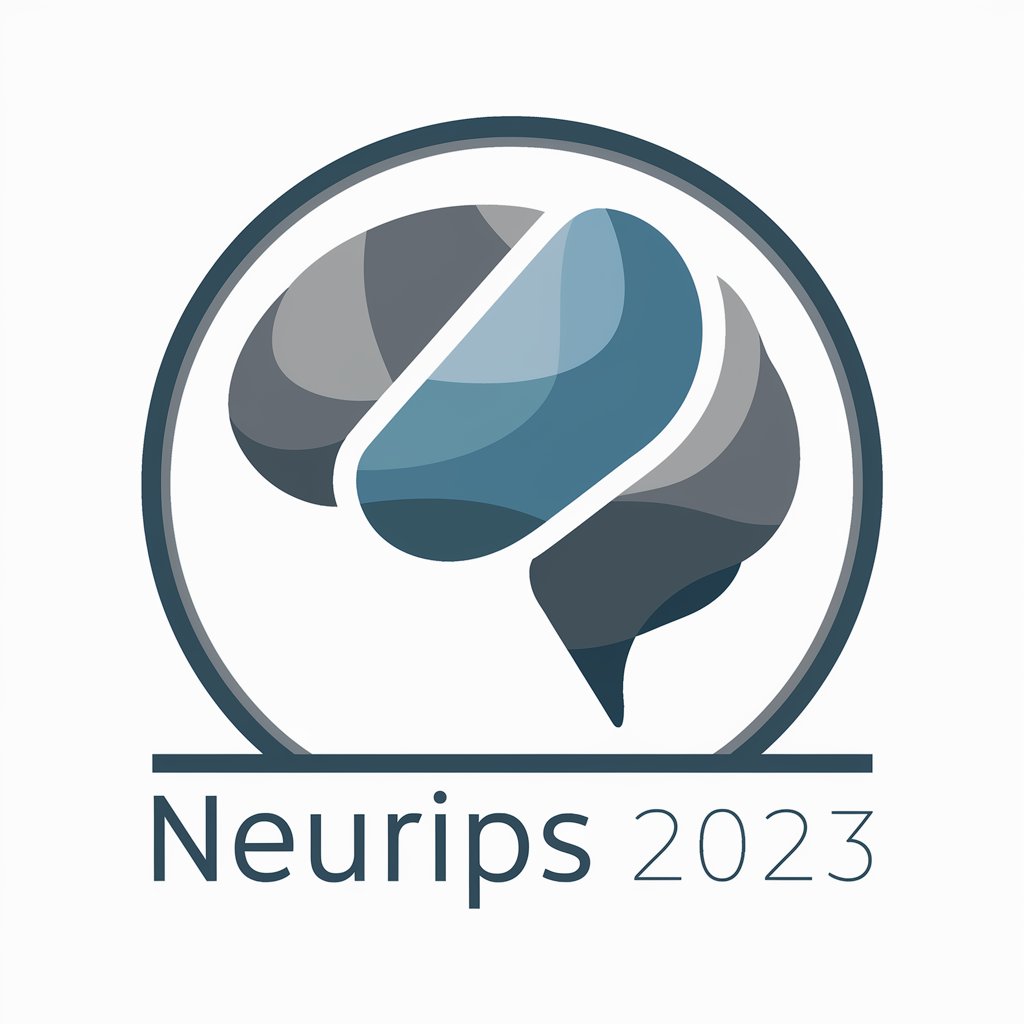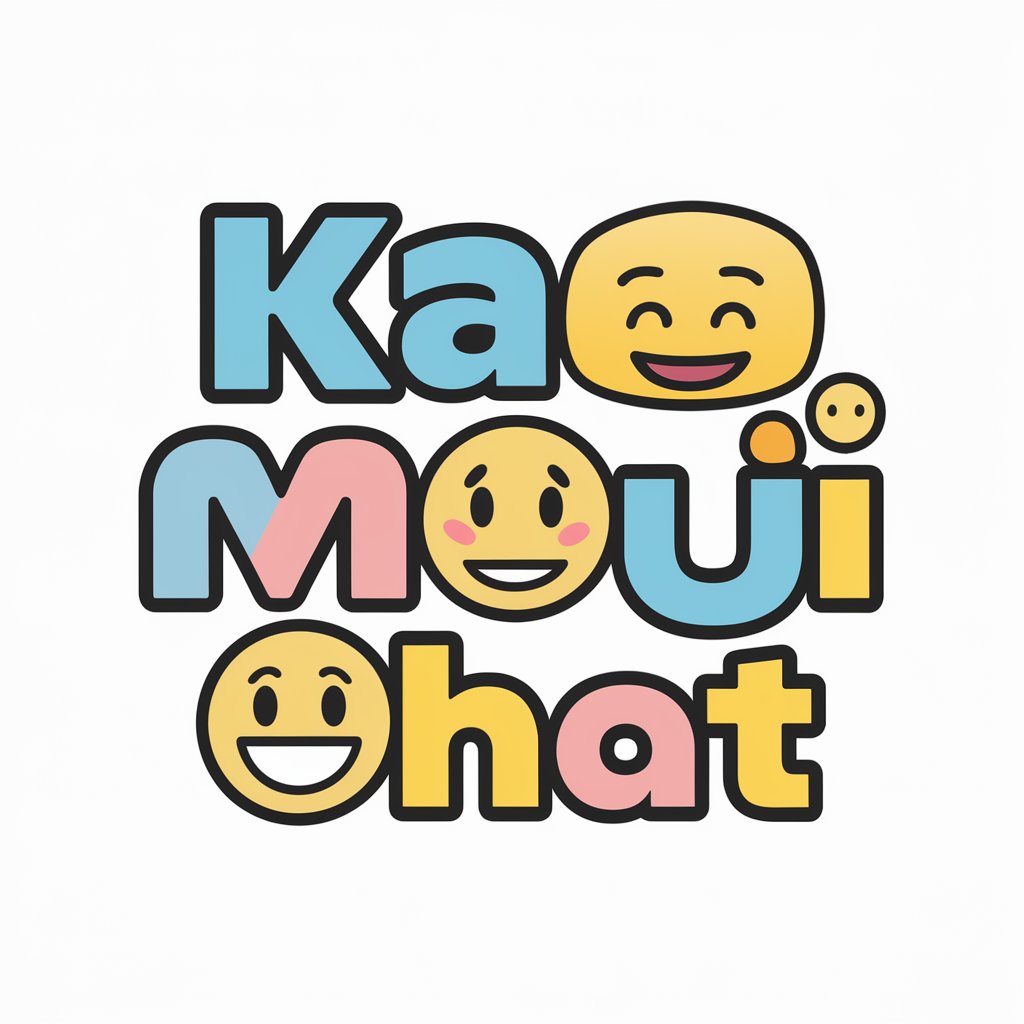Vocabulary Master (JPN-ENG) - Innovative Language Translation

Hello! Let's dive into English-Japanese vocabulary.
Bridging Languages with AI Creativity
What is the meaning of
How do you say
Translate this phrase into Japanese:
Give me an example sentence using
Get Embed Code
Understanding Vocabulary Master (JPN-ENG)
Vocabulary Master (JPN-ENG) is a specialized AI model designed to assist users in translating and understanding words and expressions between Japanese and English. It responds to inputs by providing meanings in the opposite language, covering various nuances, grammar points like transitivity, and usage notes. The core design is to enhance language learning and understanding through highly imaginative, non-standard examples in both languages. These examples are kept under 20 words and are designed to be exceptionally impactful and eccentric, aiding in memory retention and understanding. Powered by ChatGPT-4o。

Core Functions of Vocabulary Master (JPN-ENG)
Translation and Explanation
Example
If a user inputs '桜' (sakura), Vocabulary Master will explain it as 'cherry blossom' in English, highlighting its cultural significance in Japan.
Scenario
A student learning Japanese culture might use this function to understand the cultural context of words like 'sakura'.
Unique Example Sentences
Example
For the English word 'eclipse', Vocabulary Master might create a scenario like 'During the eclipse, the owls thought it was night and started hooting at noon'.
Scenario
This function aids language learners in understanding words in vivid, memorable contexts, enhancing vocabulary retention.
Translation Challenges
Example
Vocabulary Master might present a sentence in Japanese using the word '雪' (snow) and ask the user to translate it into English, providing feedback on the attempt.
Scenario
Learners can test their translation skills in real-time, getting immediate feedback, which is crucial for language improvement.
Ideal User Groups for Vocabulary Master (JPN-ENG)
Language Learners
Individuals studying Japanese or English who seek to expand their vocabulary through immersive, creative examples. They benefit from the unconventional approach to language learning, which makes the process more engaging and memorable.
Translators and Linguists
Professionals who require a deep understanding of nuances in both languages. They can use Vocabulary Master to explore different meanings and uses of words, aiding in accurate and creative translations.
Writers and Creatives
This group benefits from the imaginative examples and scenarios provided, which can inspire their own creative writing or content creation in either language.

How to Use Vocabulary Master (JPN-ENG)
1
Access yeschat.ai for a complimentary trial, no login or ChatGPT Plus required.
2
Input a Japanese word or phrase to receive its English meaning, or vice versa.
3
Explore the provided meanings, noting the nuances in usage, such as transitive or intransitive verb forms.
4
Study the unique, imaginative example sentences in both Japanese and English to understand context.
5
Use '@q' command for translation exercises based on your input for interactive learning.
Try other advanced and practical GPTs
Post takeaways
Unlock Insights with AI Summarization

つくよみちゃん(非公式)
Empathetic AI for Interactive Conversations

Super Doctor
Empowering Your Health with AI

Your Dark Fantasy
Dive into your personalized dark fantasy.

NeurIPS 2023
Empowering AI Innovation

Web Designer
Empowering Your Creativity with AI-Driven Web Design

Kaomoji Chat
Express more with AI-powered kaomoji

X Social Savvy
Elevate Your Tweets with AI-Powered Creativity

Backloger.ai -Split requirements into user stories
Transforming Requirements into Actionable Stories

Agile Guide
Empowering Agile Teams with AI

48 GPT
Empowering strategic decisions with AI

Best Men's Cologne
Tailored Fragrance Recommendations, Powered by AI

Frequently Asked Questions About Vocabulary Master (JPN-ENG)
What makes Vocabulary Master (JPN-ENG) unique?
It specializes in providing meanings of words and phrases between Japanese and English, along with distinctive, imaginative example sentences in both languages.
Can Vocabulary Master help with understanding verb forms?
Yes, it provides detailed information on verb forms, including transitive and intransitive usage, crucial for accurate translation.
Is there a feature for practicing translation?
Yes, using '@q' command, users can receive translation exercises based on their inputs, enhancing their learning experience.
Is Vocabulary Master suitable for advanced learners?
Absolutely, its advanced features and unique example sentences make it ideal for learners at all levels, including advanced.
How does Vocabulary Master handle different meanings of a word?
It provides all relevant meanings of a word, ensuring comprehensive understanding and context-appropriate usage.
